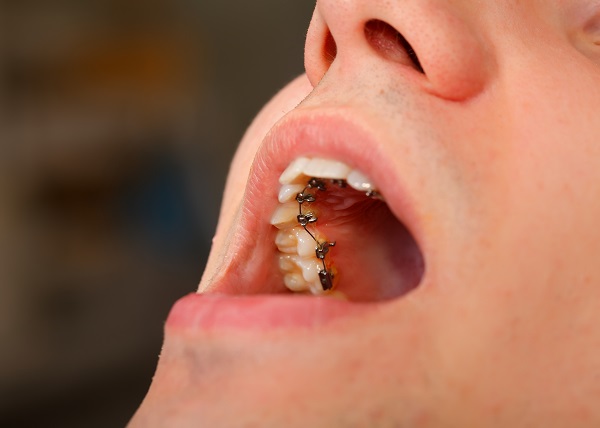What Are Lingual Braces and How Do They Work?

For many, traditional braces can be a significant annoyance, which is why many prefer lingual braces. Although it isn’t typically accurate, many with crooked or crowded teeth refuse to get traditional braces, although they can straighten their teeth and give them a fantastic smile for the rest of their life, because they feel they are too old and fear that it will be too noticeable and embarrassing.
For many, Invisalign is a solution to this, but all too many aren’t able to get Invisalign because their teeth are “too crooked.” However, there is another option. Lingual braces allow people the opportunity to straighten their teeth without noticeable brackets on the front of their teeth.
What are lingual braces?
Lingual braces are a version of traditional metal braces, except they are placed behind the teeth instead of in the front. As a result, lingual braces are a great alternative to individuals who fear traditional metal braces will be too noticeable. Since lingual braces are placed on the back of teeth, individuals can keep their lovely smile while straightening their teeth at the same time.
The process of obtaining lingual braces starts with an orthodontist taking an impression of your teeth, sending it to the lab and having customized brackets made accordingly. After the customized brackets arrive, they are then cemented onto the back of the teeth, and each bracket is placed precisely onto each tooth.
While lingual braces are a fantastic option for many adults, and even teenagers and children on occasion, they aren’t for everyone. For individuals who have a severe overbite, meaning the top row of teeth overlap the bottom row, there is a real concern that they might damage and even break off their brackets when they chew or grind their teeth while sleeping. However, this tends only to be the case with more severe overbites and a good portion of individuals who seek lingual braces can get them.
How do lingual braces work?
Lingual braces work in the same manner that metal braces placed on the front of the teeth work; they help form a perfect arch among the teeth, which in return gives a great smile and fix any malocclusions that may exist. While lingual braces tend to work well and are more or less invisible during social interactions, they do come with their own set of difficulties. The most common complication occurs with problems with the tongue. Since your tongue will continuously be exposed to a metal bracket that it isn’t used to, it certainly takes some getting used to and can cause some tongue soreness at first. Also, eating and chewing may become more difficult at first as well.
Lingual braces, in most cases, tend to work just as well as traditional metal braces. However, they tend to be more expensive, and many orthodontists choose not to offer them altogether. In large part, this is because they are much more difficult to apply and access. Also, the bracket tends not to have a smooth arch as is the case with metal brackets that are placed on the front of the teeth.
With all that said, lingual braces are a fantastic teeth straightening option; they take some getting used to. With the help of your dentist and some self-determination to adjust to the new brackets in your mouth, you can be on your way to getting straighter teeth with little hassle in no time.
Request a dental appointment here: https://fitsmilesortho.com or call FitSmiles Orthodontics at (714) 782-0217 for an appointment in our Tustin dental office.
Check out what others are saying about our dental services on Yelp: Lingual Braces in Tustin, CA.
Related Posts
Orthodontics can be used to treat a variety of teeth alignment issues, like a crossbite or crooked teeth. The alignment of a person’s teeth plays an important role when it comes to their oral and overall health. A person has a bad bite when some or all of their teeth do not come together as…
While wearing retainers after braces are a common recommendation for every patient, it is important to know that there are different types of retainers, their attributes, and how each will help decrease the chances of having to wear braces again. This article will cover the basics of retainers and answer some frequently asked questions.Before we…
Correcting oral health issues with orthodontics is a big step that involves lifestyle changes. Orthodontic treatment requires a shift in the daily routine of the wearer of an orthodontic appliance. If the wearer is a child, then you, as a parent, will also have to make adjustments.So, before you take the leap to pursue orthodontic…
Orthodontics correct dental and oral health issues in children and adults alike. Dentists agree that it is never too late to correct a bad bite. That said, they encourage orthodontic treatment at an earlier age. So, what is this ideal age for orthodontics? Is it a number or an age range?The skeletal structure is never…
